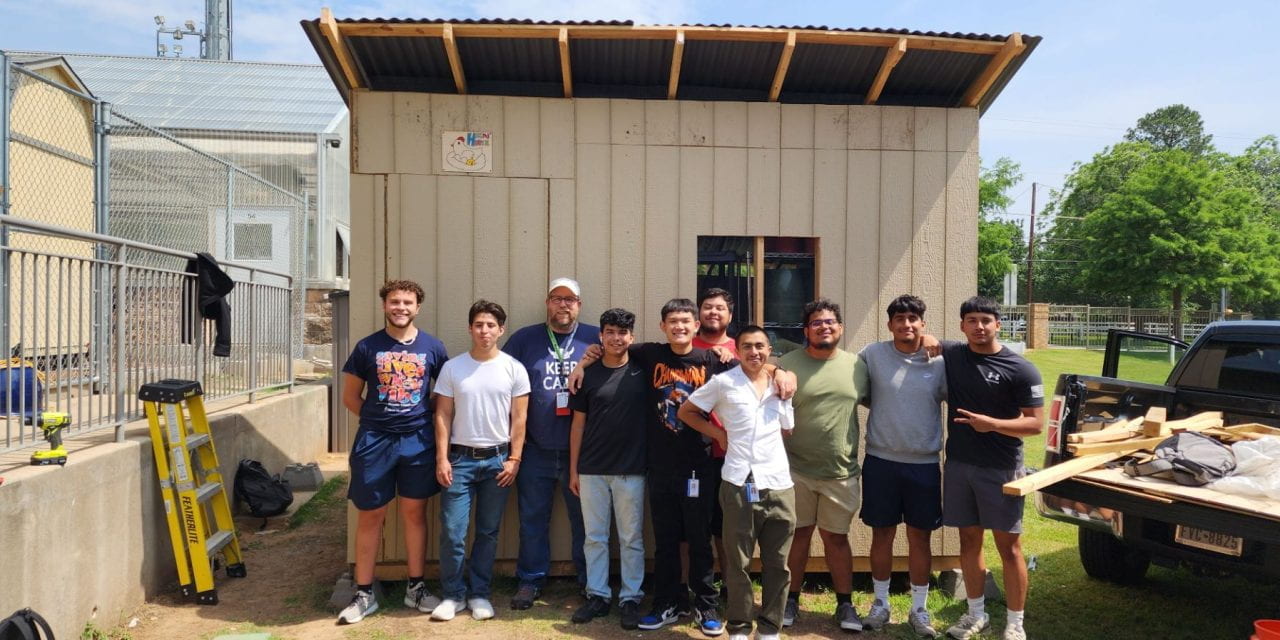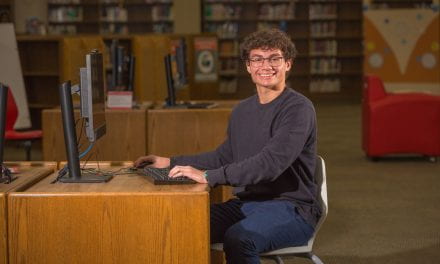Nimitz High School seniors may have graduated earlier this month. But a group of engineering students from the school left a mark on their school – literally.
 Students in Dwight Davison’s engineering class designed and constructed a chicken coop to serve their classmates in the veterinary science program. The 10-foot by 12-foot building will house up to 40 chickens for students in the veterinary science program to raise and sell the eggs they produce to the community.
Students in Dwight Davison’s engineering class designed and constructed a chicken coop to serve their classmates in the veterinary science program. The 10-foot by 12-foot building will house up to 40 chickens for students in the veterinary science program to raise and sell the eggs they produce to the community.
“We’re always trying to find ways to do cross-curriculum, but I didn’t know what to expect when we presented this idea to the engineering students,” says Matt Florence, veterinary science teacher at Nimitz. “The questions that I got from the students blew me away. They had clearly done their research. At that point, I was like, ‘Oh, we’re good.’”
In their research, which began in the fall, students reached out to experts and studied their client – the chickens.
“We learned a lot about chickens,” says recent Nimitz graduate Alexis Carbajal. “They don’t need a lot of space in general. They like to be close together. They’re comfortable with it.”
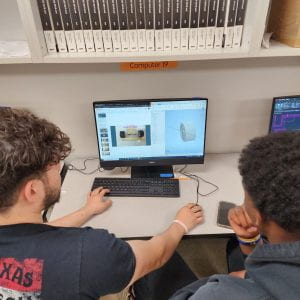 Students surveyed the area where the coop would be constructed. From there, they devised plans using AutoCAD, Inventor, Cura computer programs as well as hand drafting, sketching and the engineering design process.
Students surveyed the area where the coop would be constructed. From there, they devised plans using AutoCAD, Inventor, Cura computer programs as well as hand drafting, sketching and the engineering design process.
“I want to study mechanical engineering and designing parts, so designing the actual chicken coop taught me lessons and made me better at Inventor, AutoCAD, 3D modeling,” says Jason Escobar, who mapped out the build and created a shopping list of materials for the project. “I had no prior experience, but now I know how to do some stuff that I didn’t know how to do.”
Once construction materials were collected, students broke ground on the project in March. After a change in location, students were first tasked with leveling the ground.
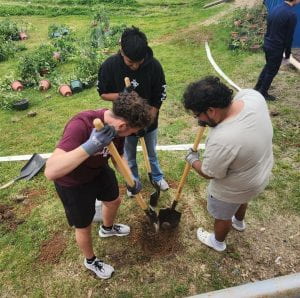 “Because it was on a sloped area, we tried to get it as flat as we could, which involved a lot of digging,” says Carbajal. “There was a lot of trial and error with digging holes. You would dig this one hole to make it level with another part, and then we checked it, it was not level. Or those two parts were level and the extra wasn’t.”
“Because it was on a sloped area, we tried to get it as flat as we could, which involved a lot of digging,” says Carbajal. “There was a lot of trial and error with digging holes. You would dig this one hole to make it level with another part, and then we checked it, it was not level. Or those two parts were level and the extra wasn’t.”
“It was also challenging because every time it rained, it would move the dirt back – and it rained a lot,” adds Adrian Barboza, chief designer and job foreman.
Once students completed the leveling for the project, they embarked on the most time-consuming part – building the base.
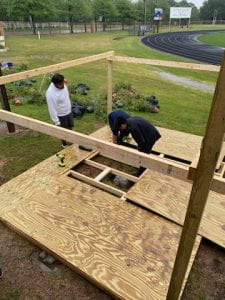 “The foundation is always the longest,” says Barboza, who works in blue-collar with his dad and enjoys carpentry.
“The foundation is always the longest,” says Barboza, who works in blue-collar with his dad and enjoys carpentry.
Once the foundation was laid, students continued with framing, adding corner posts, constructing nesting areas, setting the offset skillion roof (which provides ventilation) and framing the door. Because of the school’s block scheduling and their class period being close to lunch, the students would work on their project for an hour-and-a-half at a time, sometimes foregoing lunch.
“The days that we didn’t go get lunch from the school cafeteria, we brought our
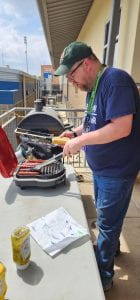
own food,” says Carbajal. “The first day that we were out there, Mr. Davison made burgers and hot dogs for us. Another time, Adrian brought us tuna burgers. It was a good bonding experience. We all worked together, then we ate together.
After a month-and-a-half, the construction was officially marked complete with the placing of a “Hen House” sign on the coop door in mid-May, and plenty of lessons for all involved in the project.
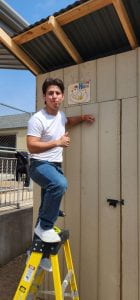 “I will say that one thing I learned was that you can never check a measurement enough,” says Adrian Martinez. “Even if it means taking a little more time, you can maybe avoid a situation. We also practiced a lot of communication skills. Even if it was just screwing in a piece of wood, you have to be very specific about where and how.”
“I will say that one thing I learned was that you can never check a measurement enough,” says Adrian Martinez. “Even if it means taking a little more time, you can maybe avoid a situation. We also practiced a lot of communication skills. Even if it was just screwing in a piece of wood, you have to be very specific about where and how.”
“It was a great learning experience – from the designing to actually building it,” adds Carbajal. “We learned hard work and planning. We thought we had everything laid out, but once you’re actually building it, you’re like, ‘oh, we didn’t account for this’ or ‘how are we going to do this now?’ Most importantly, this project taught me teamwork and getting projects done quickly by dividing work and having everyone work together to build a final product.”
Although the construction phase is complete, the project is far from finished.
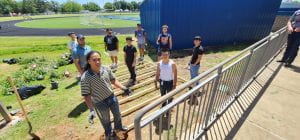 “We already have a couple more ideas for next year to improve on the chicken coop that these guys put in place,” says Florence. “Adding solar lighting fans, rainwater collection, corner molding. But it was all started by these students.”
“We already have a couple more ideas for next year to improve on the chicken coop that these guys put in place,” says Florence. “Adding solar lighting fans, rainwater collection, corner molding. But it was all started by these students.”
“People will always remember how our class made this,” adds Escobar. “It will be the legacy that we left behind.”
Other students who worked on the project include Harrison Nguyen, Emmanuel Paz, Eduardo Prado, Jesus Rodriguez, Noah Valdez and Anthony Chevez.

